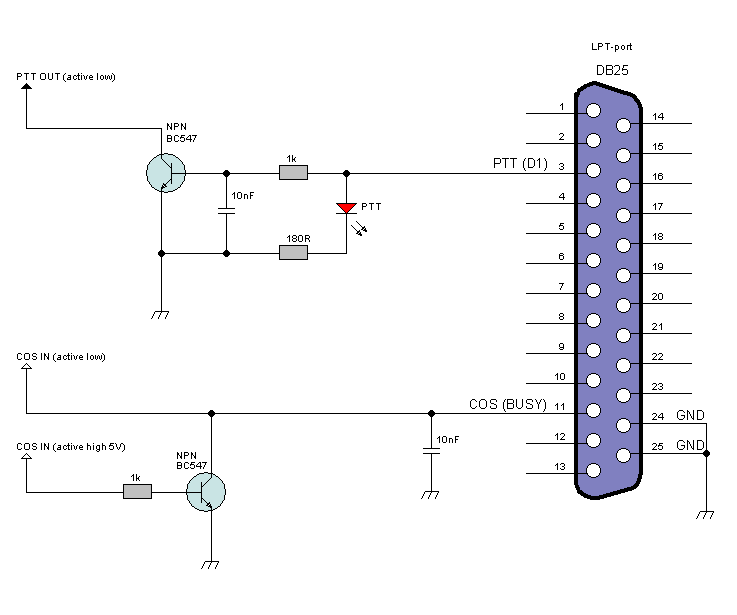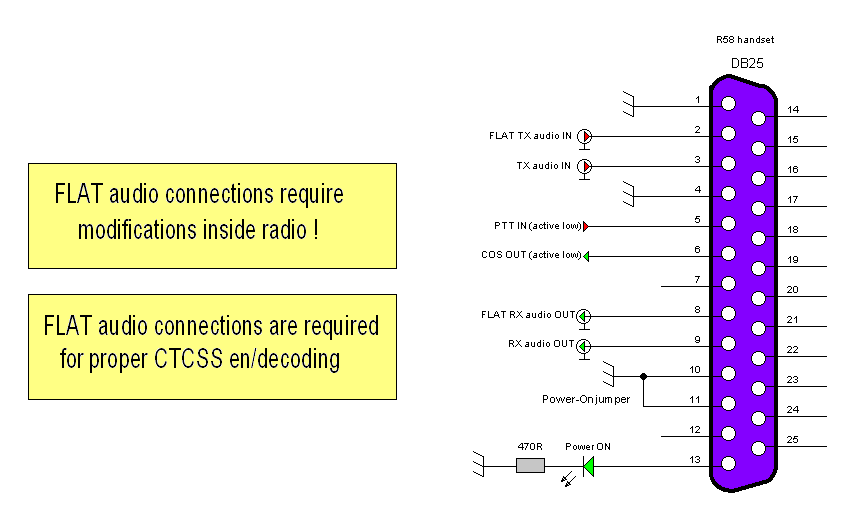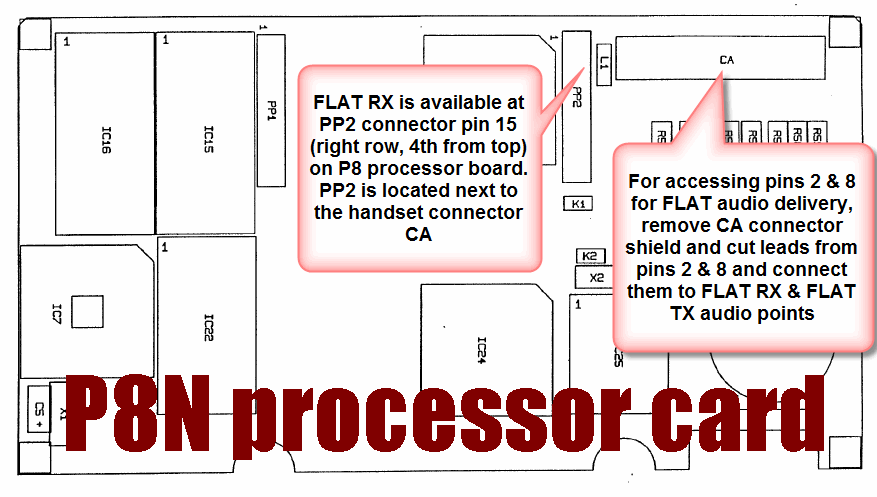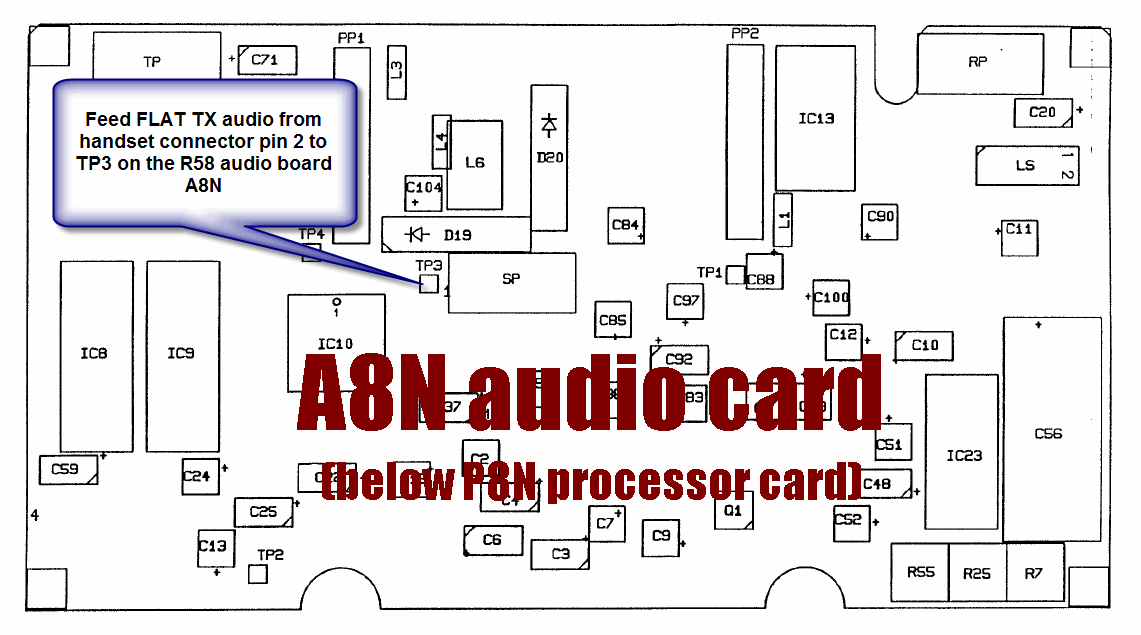Interfacing radio ports to R.Net controller can be done using different media:
- USB port with CM108/118/119 USB audio controller providing both TX/RX audio and COS/PTT signals through CM108/119 GPIO ports
- Conventional sound card providing TX/RX audio and RS232 port for COS/PTT signals
- Conventional sound card providing TX/RX audio and LPT port for COS/PTT signals (see below)
- USB audio fob without GPIO modification providing only TX/RX audio and either RS232 or LPT port for COS/PTT signalling.
- USB audio fob without GPIO modificaiton providing only TX/RX audio and Raspberry Pi GPIO ports for COS/PTT/CTCSS signalling
Note that stereo sound card with also stereo input can provide two independent ports, first port uses left audio channels and second port uses right audio channels. Singe RS232/LPT port can provide COS/PTT signals for multiple ports.
Simple LPT-port interface for PTT/COS

This simple interface can be used with TLB software to hook upa radio (either simplex or duplex).
- PTT is a hardware signal providing grounding contact for transmitter drive.
- Both positive and negative COS signals are provided. COS signal is the squelch state of the receiver.
Click the schematics image to see it in the original size
To use this circuit, port configuration should have the following parameters set accordingly;
TxKeyMethod = 2
RxCosMethod = 2
Port configuration file includes also parameter to define LPT port in use which in some cases need to be altered;
DevName = /dev/parport0
Both PTT can COS signal polarity can be altered with following parameters if required. Usually COS is detected with active high and PTT is driven also active high to drive the transistor for grounding PTT;
InvertCOS = 1
InvertPTT = 1
Nokia 58-series information
Nokia R58-series mobile radios and B58-series base station radios require the following connections to be used with TLB. Flat audio connections are preferred for good audio quality and for proper CTCSS detection.



